- Register
- Log in to Tune-In
- Wishlist (0)
-
Shopping cart
(0)
You have no items in your shopping cart.
Beatles News
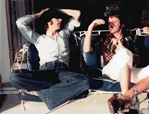
One of the saddest facts of John Lennon’s senseless murder in December 1980—and there are many, to be sure—is that his killer robbed him of the opportunity to grow old, to rethink his relationships and perspectives as we all inevitably do with the passage of time.
Yesterday marks the 41st anniversary of John and Paul’s last day together—the last day, at least, for which we have convincing historical evidence in the post-Beatles biographical record.
It was Saturday, April 24, 1976, when Paul and Linda McCartney were visiting John Lennon and Yoko Ono at the Dakota apartment building in New York City. It was a far cry from July 7, 1957—just shy of 19 years earlier—when John and Paul first met in a Liverpool churchyard.
As it turned out, that fateful evening in April 1976 was not the first time that Lennon and McCartney had crossed paths since the Beatles’ disbandment. The songwriting duo had previously reunited on March 29, 1974, during Lennon’s infamous Lost Weekend in Los Angeles. The last known photo of John and Paul was taken that day by May Pang at Lennon’s rented house in Santa Monica.
During the previous evening, the former bandmates details

A modern take on meals with a classic rockstar.
Ringo Starr is offering two lucky fans the chance to dine with music royalty as a part of his charity campaign with Omaze.
The Beatles alumni will play host to one charitable fan (and their plus-one) at his 77th birthday brunch on the July 7 in LA. All you have to do is donate a minimum of $10 to Ringo’s Omaze campaign.
All the money goes to benefit the David Lynch Foundation, a non-profit organisation that reduces trauma and toxic stress among at-risk populations, reports Rolling Stone.
Winners will be flown to the event, where they’ll become part of Starr’s inner-circle to dine in style with other VIP guests in front of the world-renowned Capitol Records building.
As is tradition, Starr is encouraging the world to take midday (local time) on July 7 to spread a little “peace and love”. He says, “Wherever you are: on the bus, in the factory, having dinner, having lunch. No matter what part of the world you’re in.”
Recently, Paul McCartney and Ringo Starr were found to be in the studio together. Starr shared a photo of the two Beatles legends together and wrote: “Thanks for coming details
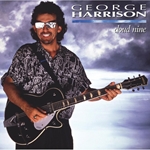
Looking at it in retrospect, Cloud Nine, released thirty years ago by George Harrison, seems like just another in the long line of triumphant albums released by members of The Beatles during their solo years. Yet at the time, no one seemed like a longer shot to create a hit record than Harrison, whose reputation as a recluse who wanted nothing to do with making records peaked in the middle of the ’80s.
What made the album even more surprising was how it represented a willingness by Harrison, who always seemed to view his Beatles years with caustic suspicion, to embrace the sounds of his past. The chart-topping “Got My Mind Set On You,” for example, effortlessly captured a simplistic Merseybeat feeling. Even more striking, “When We Was Fab” so eerily recreates a Beatlesque mélange of sounds that you’d be forgiven upon hearing it for the first time for thinking it was a Magical Mystery Tour outtake.
When Harrison decided upon pursuing the track, it helped that he had a kindred spirit in the producer’s chair in Jeff Lynne. “I just had the thought, ‘I’d like to write a song that’s reminiscent of that period of &rsq details

In this day of anti-immigration, anti-science, ‘America First,’ and less-than-subtle racism, I found a welcome arrival recently with Ron Howard’s film The Beatles: Eight Days a Week — The Touring Years. Like many people my age, I grew up with the Beatles, and their music, values and image are deeply ingrained in my view of how the world works. I remember the day in early 1964 when they flew into New York’s Idlewild (now JFK) airport. I was home from school with the flu, but listening to their progress on a transistor radio, and hearing the song, “I Want to Hold Your Hand”, so many times that I could play each Beatles’ part. But more than hearing the pieces, I remember the sheer rush of emotion that washed over me whenever I heard the song begin and the deep sense of wellbeing I felt as the song ended. Their music was an emotional experience for a ten-year-old school boy in Brooklyn. As they evolved through the 1960s, we grew up along with them.
Growing up in Brooklyn I knew many people from other countries and I knew we weren’t alone in the world, but I suppose I saw Europe and Asia as places where people were from, not as a place we were going. Europe was where they details
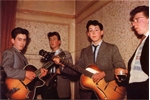
As the future Beatles members grew up in Liverpool, they keenly listened to songs of the day, learning them for their local gigs. While imitating these popular artists, they were also honing their own songwriting and musicianship skills. During the summer of 1957 — still in their pre-Beatles group, the Quarrymen — John Lennon, and Paul McCartney began experimenting with writing songs.
Just a year later, George Harrison, Lennon and McCartney found themselves in a crude recording studio, singing into one microphone, laying down two tracks: a cover of Buddy Holly’s “That’ll be the Day” and a Harrison-McCartney composition (yes, you read that correctly) entitled “In Spite of All the Danger.” A blend of doo-wop, rockabilly, and rock and roll, the song is first time that Harrison, Lennon, and McCartney would appear on a recording.
“In Spite of All the Danger” represents one of McCartney’s earliest compositions. In Barry Miles’ Many Years from Now, McCartney described how the two would ditch school to write songs together during summer 1957. Once McCartney’s father left the house for work, the two friends would settle in for a three-hour comp details

PAUL McCARTNEY HELPS MOJO celebrate 50 years of the Beatles’ Sgt. Pepper’s Lonely Hearts Club Band with an exclusive interview in the magazine that hits UK shops on Tuesday, April 25. He recalls the circumstances surrounding the group’s most groundbreaking album and gives his verdict on the new stereo mix designed to add legs to one of popular music’s key benchmarks.
But as McCartney reminds MOJO, before Sgt. Pepper became an icon, there was a period of critical bemusement. How dare Beatles band go all weird?
“We were always being told, ‘You’re gonna lose all your fans with this one.’” McCartney tells MOJO. “And we’d say, ‘Well, we’ll lose some but we’ll gain some.’ We’ve gotta advance.”
In 1967 The Beatles ran the gauntlet of a media gripped in a moral panic over the younger generation’s embrace of drugs, and others who regarded Pepper’s stylistic smorgasbord and hints of thematic coherence as evincing ideas above the group’s station. The Lovable Moptops stereotype died hard.
“Sgt. Pepper did actually get a terrible review in the New York Times,” recalls McCartney. details

Part of what established The Beatles as the greatest rock ‘n’ roll band of all time was the prolific nature of their early work.
When “Beatles for Sale” released on Dec. 4, 1964, it became the Fab Four’s fourth album in less than two years’ time. And it came out only 21 weeks after the band’s third album, “A Hard Day’s Night.”
Some might view “Beatles For Sale” as a placeholder between “A Hard Day’s Night” and “Help!,” both of which were attached to eponymous films. And while “A Hard Day’s Night” featured all original Lennon/McCartney compositions, only eight of the 14 tracks on “Beatles For Sale” were written by the band — a track listing similar to their first two albums, “Please Please Me” and “With The Beatles.”
Like other early Beatles albums, “Beatles For Sale” did not appear in the United States as an album until 1987 when the band’s catalogue was standardized for CD release. However, eight of its tracks appeared on the U.S. album “Beatles 65” and others were later released on “Beatles VI.”
< details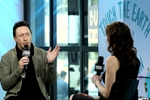
Julian Lennon is thinking about putting his life story down on paper.
During an interview with The Huffington Post at Build Series, the musical artist and environmental activist said he’s interested in writing a memoir because, after all, “Who knows how long we’ve got?” He added with a smile, “I am hopeful, by the way.”
Lennon, 54, admits that he doesn’t have the best memory, so he’d have to rely on others to fill in the blanks of his life.
“I’d like to get around to that because there are so many memories that a lot of my friends or colleagues that I work with have that I don’t recall because of the time and the place and because of where my focus was as opposed to theirs,” he said. “Even hearing the stories myself that my friends have told me and I’m going, ‘Really? I did that? OK, right.’ So, I’m just as curious, to be honest.”
Some of those fuzzy memories date back to when he was a child, growing up as the son of John Lennon.
“He walked out the door when I was about 3 or 4 years old and we only saw each other a few times,” Julian said of his father.
When aske details
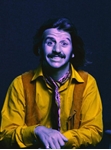
Scots author Davies, 81, reflects fondly on his first experimentation with “drugs” in his new book The Co-Op’s Got Bananas! — his memoir of growing up in the 50s and 60s.
He says: “This one day Ringo gave me a ‘reefer’ to try in the 60s. I don’t smoke and I’d never taken any drugs my whole life, but I took it home to my wife.
“Well, we closed the curtains, took the phone off the hook and puffed away for half-an-hour, but felt no different and worked for the whole evening.
“The next time I saw Ringo I said, ‘I didn’t think much of your reefer’. That’s when he told me it was just cabbage leaves.”
Davies, who was born in Johnstone, Renfrewshire, was given permission to pen his biography of The Beatles as they recorded the iconic Sgt Pepper’s album.
Davies says: “I lived with them for 18 months and I was in Abbey Road during the whole making of Sgt Pepper’s.
“You know the famous photograph on Sgt Pepper? I was there in the studio at the time when it was being shot and they were going to have Hitler and they were going to have Jesus — but at the last minute peop details
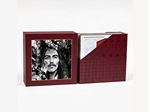
Since we’re talking Record Store Day this week, I thought I’d rave about two new, high-end Beatles-related gems that emerged recently, perfect for digging up this Saturday. They'll keep you more than a little occupied while you wait for the 50th anniversary reissue of "Sgt. Pepper's Lonely Hearts Club Band," due out May 26.
In honor of the late George Harrison’s birthday in February, an extended edition of his book, "I Me Mine," was published in an absolutely stunning package.
First produced by Genesis Publications in 1980, "I Me Mine" was packed full of photos, reminiscences and hand-written song lyric sheets, reminding us that for all his serious spiritual side, George never stopped being the fun-loving Liverpool kid with a razor wit.
This new hardcover "extended" version includes another 59 handwritten lyrics and more content that will thrill Harrison fans.
It makes the perfect accompaniment to the sprawling box set that arrived at the same time, collecting all of Harrison’s 13 solo outings on vinyl. "George Harrison - The Vinyl Collection" also adds 12" picture discs of "When We Was Fab" and "Got My Mind Set On You."
By: Bobby Tanzilo
Source: On Milwauk details
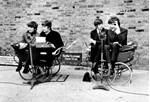
In her screenplay "Revolver," Kate Trefry captures an extraordinary day in the life of Anchorage.
"It's based on my mom and her friends' experience when the Beatles landed in Anchorage in 1966," said Trefry, 30, who is from Anchorage. "My mom was 13, so my grandma locked her in the house like a lot of moms did. But a few of her friends escaped and went to the hotel where the Beatles were staying and actually got to the floor where their room was, but didn't see them."
The script is getting some industry buzz, and later this month, stars including Olivia Wilde and "Saturday Night Live" standout Beck Bennett will participate in a live table reading of "Revolver" at the Brooklyn Academy of Music.
"We're inviting financiers and producers and a lot of people that we hope want to invest or be involved in some way," said Trefry, who lives in Los Angeles.
"Revolver" also earned a spot on the 2016 Black List, a compilation of industry executives' favorite unproduced screenplays of the year. Trefry's husband, also an Alaska-born screenwriter, has a script on the list as well.
Trefry's career is getting better all the time.
Right now, she is working on the second season of "Stranger Things," details
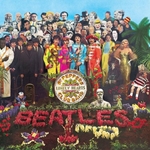
Pete Paphides goes to Abbey Road to listen to the new anniversary edition of Sgt Peppers Lonely Hearts Club Band and marvels at the charge of the "psychedelic light brigade" that is hearing the tweaked versions of songs.
I'd heard that Sgt Pepper's Lonely Hearts Club Band was the best album of all time, so when I happened upon a picture disc, displayed behind the counter at Birmingham record shop – a snip at £2.99! – it was a no-brainer. This was 1983. I was 13. My pocket money was £5 a week. Every penny went on records, so the fact that I still had £2.01 change from the best album of all time felt like an absolute triumph. Plus! Picture disc! It would take years for me to realise that the version of Sgt Pepper I bought that day is almost certainly the most substandard one in existence. Showing a picture disc to a committed audiophile is an act comparable to showing a shower head to a cat or a picture of Les Dennis a picture of Amanda Holden. Even worse, the version of Sgt Pepperavailable to record buyers in the early 80s was the stereo one, famously mixed in less than an hour without the band even present. It was the mono one that t details
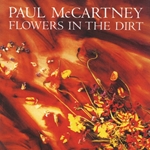
Unlike John Lennon, the chronic oversharer avant la lettre, Paul McCartney has always been guarded about his interior life, rarely using his songs to deliver the gossip about what it’s like being Paul McCartney. For McCartney, the entertainer’s imperative is to entertain, not broadcast his angst. Moreover, he seems to find it necessary to guard, to fence off, his actual self, forever presenting himself to the world as relentlessly afflicted by goofy joy. In the immortal phraseology of a now-defunct music magazine, he is Fab Macca Wacky Thumbs Aloft. Yet on his 1989 album Flowers in the Dirt, McCartney showed, in the track “Don’t Be Careless Love,” a tormented side. The speaker, noting “the midnight lamp” burning down, resolves to stay up until his love returns home.
He continues:In my dream you’re running nowhere Every step you’ve taken turns to glue Walking down a spiral staircase Falling through, falling through. Later the singer worries about his companion being “chopped into little pieces / by some thugs.” It might be the most haunted, introspective song McCartney has ever written. For the man with everything, only one thing really mattered: Linda, hi details

Of all the art that the Beatles brought into the world, their cinematic misadventures are probably less fondly remembered than their music. But in addition to 12 studio albums, 13 EPs, and 22 singles, the Fab Four also released five films in their comparatively few years together. These efforts comprised two feature films, a TV movie, a cartoon, and a documentary, all of admittedly inconsistent quality. Looking back now, these films provide a fascinating insight into the phenomenon of Beatlemania.
For Beatles fanatics such as myself, the music alone makes them a joy to watch and re-watch, but as pieces of cinema in their own right there’s plenty to still be enjoyed and appreciated. Their influence on modern culture can be felt from music videos to animated films - perhaps not quite as iconic or ubiquitous as the band’s songwriting, but nonetheless essential in the story of British cinema.
The first Beatles film, 1964’s A Hard Day’s Night, was conceived by United Artists as a cheap cash in on The Beatles’ exploding popularity, and was shot in black-and-white for a limited budget of £500,000. Thanks to director Richard Lester, however, it’s probably the band& details

Ringo Starr is a fan of Justin Bieber.
The 76-year-old music icon - who is best known for being the drummer in the Beatles - has admitted to liking the 'Sorry' hitmaker, but Ringo doesn't think Justin is as big as his band once were.
During a conversation with a reporter, Ringo was asked: "If the Beatles and Justin Bieber were touring together in their prime, who would open?"
And Ringo - who appeared in the legendary group alongside Sir Paul McCartney, John Lennon and George Harrison - had little hesitation in replying: "Justin."
Then, the reporter said: "Beatles all the way, right?"
To which Ringo nodded and added: "All the way, brother."
Despite this, Ringo admitted to being a fan of Justin, whose most-recent album 'Purpose' earned him widespread critical acclaim and commercial success.
Ringo told TMZ: "But we love Justin. That's the second question I'm not going to answer."
Meanwhile, Ringo previously revealed the crucial role his former bandmate Sir Paul pla details
